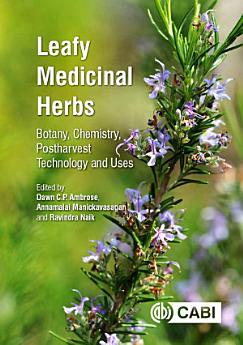Leafy Medicinal Herbs: Botany, Chemistry, Postharvest Technology and Uses
Dawn C P Ambrose · Annamalai Manickavasagan · Ravindra Naik
Jul 2016 · CABI
Ebook
296
Pages
family_home
Eligible
info
reportRatings and reviews aren’t verified Learn More
About this ebook
Medicinal herbs are rich in vitamins, minerals and antioxidants, and are able to synthesize secondary metabolites with disease preventive properties. It is due to these qualities that herbs have been used throughout history for flavouring and in food, medicine and perfumery preparations. They are also often considered to be safe alternatives to modern medicines because of their healing properties. Though interest in medicinal and aromatic crops is growing worldwide, there is still little focus on the area of leafy medicinal herbs. This book compiles the literature for 23 globally relevant leafy medicinal herbs. Beginning with a general overview and discussion of the importance of these plants, it then handles each herb by chapter. Chapters discuss the botany of the crop, including its history and origin, geographical distribution and morphology, before focusing on the chemical composition and phytochemical attributes. They then review postharvest technology aspects such as processing and value addition, before concluding with the general and pharmacological uses for each crop. A complete compilation of the subject, this book forms a vital resource for researchers, students, farmers and industrialists in the area of leafy medicinal herbs.
About the author
Dawn C. P. Ambrose is at Central Institute of Agricultural Engineering, India.
Annamalai Manickavasagan is at Sultan Qaboos University, Oman.
Ravindra Naik is at Central Institute of Agricultural Engineering, India.
Rate this ebook
Tell us what you think.
Reading information
Smartphones and tablets
Install the Google Play Books app for Android and iPad/iPhone. It syncs automatically with your account and allows you to read online or offline wherever you are.
Laptops and computers
You can listen to audiobooks purchased on Google Play using your computer's web browser.
eReaders and other devices
To read on e-ink devices like Kobo eReaders, you'll need to download a file and transfer it to your device. Follow the detailed Help Center instructions to transfer the files to supported eReaders.







